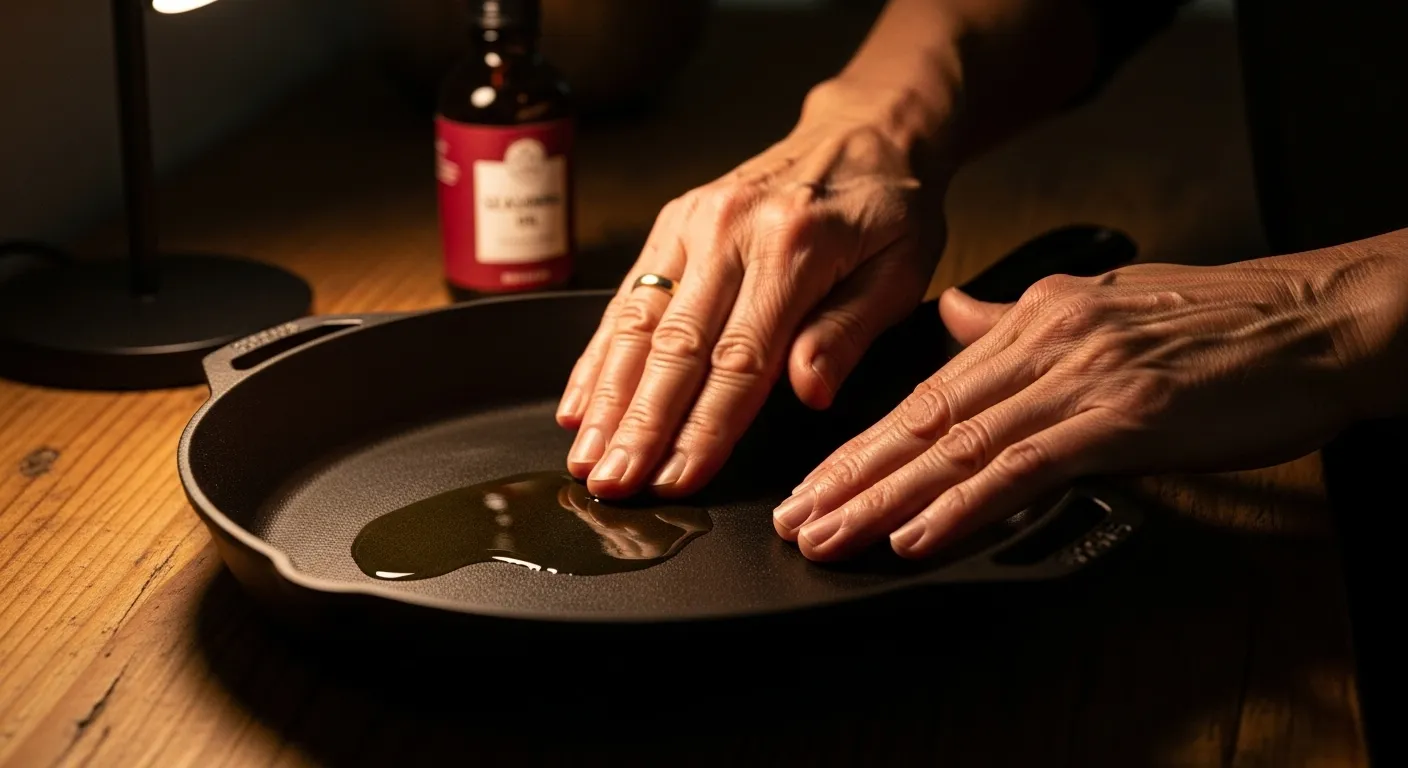
What This Actually Means for Seniors
This is the most important part: What does this information mean for your daily life? As we age, our bodies have had a longer period of exposure to various environmental factors. Understanding these everyday cancer risks after 55 is about empowerment, not fear. It’s about making small, simple adjustments that can support your long-term health. Let’s look at the 10 product categories highlighted in the reports.
1. Non-Stick Cookware
The Concern: Many non-stick pots and pans are made with PFAS, the “forever chemicals” we mentioned earlier. When overheated, these coatings can release fumes and tiny particles that may be ingested or inhaled. Long-term exposure has been linked to several health issues, including some cancers.
What You Can Do: If your non-stick pan is scratched or flaking, it’s best to replace it. Consider switching to materials like cast iron, stainless steel, ceramic, or glass for your cooking. If you love your non-stick pan, use it only on low to medium heat and never preheat it empty.
2. Certain Plastic Food Containers and Water Bottles
The Concern: Some hard, clear plastics contain Bisphenol A (BPA), an endocrine disruptor. This chemical can leach into food and drinks, especially when the plastic is heated or becomes old and cracked. While many companies have moved away from it, it’s still present in some products. Phthalates, which make plastic soft, are another concern.
What You Can Do: Look for containers specifically labeled “BPA-free.” Better yet, switch to glass or stainless steel for food storage and water bottles. Never microwave food in plastic containers unless they are explicitly marked as microwave-safe.
3. Processed Meats
The Concern: This one has strong scientific backing. The World Health Organization classifies processed meats (like bacon, sausage, hot dogs, and deli meats) as a “Group 1 carcinogen,” meaning there is sufficient evidence it can cause cancer, specifically colorectal cancer. The culprits are nitrates and nitrites, preservatives that can form cancer-causing compounds in the body.
What You Can Do: This doesn’t mean you can never have a hot dog at a ballgame again. The advice is to reduce your overall consumption. Treat processed meats as an occasional indulgence rather than a daily staple. You can also look for “nitrate-free” or “uncured” versions, though they should still be eaten in moderation.
4. Air Fresheners and Scented Candles
The Concern: Many plug-in air fresheners, aerosol sprays, and scented candles release phthalates and formaldehyde into the air. When burned, some paraffin wax candles can also release benzene and toluene, both known carcinogens. These chemicals can contribute to poor indoor air quality.
What You Can Do: The simplest solution is to open a window for fresh air. For a pleasant scent, try simmering cinnamon sticks and cloves on the stove or using an essential oil diffuser with pure oils. If you love candles, opt for those made from 100% beeswax or soy wax with cotton wicks.
5. Certain Household Cleaners
The Concern: Some of the most potent toxic household items are powerful cleaners. Products like heavy-duty degreasers, oven cleaners, and some all-purpose sprays can contain chemicals like quaternary ammonium compounds (“quats”) or formaldehyde. These can irritate the lungs and have been linked to health risks with long-term, concentrated exposure.
What You Can Do: You don’t need industrial-strength chemicals for everyday messes. A simple solution of vinegar and water can handle many surfaces. Baking soda is a great gentle abrasive. When you do need a stronger product, choose brands that are transparent about their ingredients or look for “fragrance-free” and plant-derived options.
6. Some Cosmetics and Personal Care Products
The Concern: The skin is our largest organ, and it absorbs what we put on it. Parabens are preservatives used in many lotions, shampoos, and cosmetics to prevent bacteria growth. Like BPA, they can disrupt hormones. Phthalates are often hidden in the “fragrance” or “parfum” on the ingredients list.
What You Can Do: Check the labels on your favorite products. Many brands now proudly advertise that they are “paraben-free” and “phthalate-free.” A simpler ingredient list is often a good sign. This is an easy swap to make next time you run out of lotion or shampoo.
7. Certain Sunscreens
The Concern: This is a very important one to get right. Sunscreen is one of your best defenses against skin cancer. The concern here is not about sunscreen itself, but specific ingredients or contaminants. Recently, some aerosol sunscreens were recalled due to contamination with benzene, a carcinogen. Separately, there is ongoing debate about the hormone-disrupting potential of a chemical filter called oxybenzone.
What You Can Do: Do not stop using sunscreen! The risk of skin cancer from sun exposure is far greater than the potential risk from sunscreen chemicals. To be cautious, you can choose mineral-based sunscreens (with zinc oxide or titanium dioxide) or look for lotions that are “oxybenzone-free” and “benzene-free.”
8. Furniture, Carpets, and Upholstery
The Concern: For decades, many household furnishings were treated with chemical flame retardants. As furniture ages, these chemicals can be released into household dust, which we then inhale. Some of these flame retardants have been linked to cancer and other health problems.
What You Can Do: You certainly don’t need to replace all your furniture. Newer items are often made without these specific chemicals. You can reduce your exposure by dusting and vacuuming regularly with a HEPA filter to capture the fine particles. When buying new furniture, look for labels that state it was made without added flame retardant chemicals.
9. Pesticides and Herbicides
The Concern: Residue from pesticides used in commercial farming can remain on fruits and vegetables. Similarly, common weed killers used for lawn care, such as those containing glyphosate, are under scrutiny by health organizations for potential cancer links.
What You Can Do: Thoroughly wash all produce under running water before eating it. You can also choose to buy organic versions of produce that tend to have higher pesticide loads (like strawberries, spinach, and apples). For your own yard, consider manual weed-pulling or using non-toxic alternatives to chemical weed killers.
10. Dry-Cleaned Clothing
The Concern: The traditional dry cleaning process uses a chemical solvent called perchloroethylene, or “PERC.” The EPA classifies PERC as a likely carcinogen. While most of the chemical is removed during the cleaning process, small amounts can linger on clothes and release a gas into your car and your closet.
What You Can Do: Look for a “green” or “eco-friendly” dry cleaner in your area that uses alternative methods like liquid carbon dioxide or wet cleaning. If you use a traditional cleaner, remove the plastic bags from your clothes and let them air out in a well-ventilated space (like a garage or patio) for a few hours before bringing them inside.













